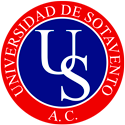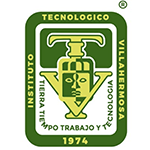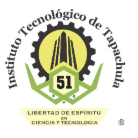Ocean University of China is a key comprehensive university directly under the Ministry of Education with distinctive marine and fishery disciplines and a complete range of disciplines. It is a key university under the national "985 Project" and "211 Project". In 2017, it was selected as a national "World-Class University" Construction of colleges and universities” (Category A). The school's motto is "The sea is open to all rivers, and the one who takes it will go far." The school was founded in 1924. It has gone through private Qingdao University, National Qingdao University, National Shandong University, Shandong University and other educational periods. In 1959, it developed into Shandong Ocean University. In 1960, it was designated by the country as one of the 13 key comprehensive universities in the country. In 1988, it was renamed Qingdao Ocean University, and in 2002, it was renamed Ocean University of China. The school has 4 campuses, among which the Laoshan campus, Yushan campus and Fushan campus occupy a total area of more than 2,400 acres; the West Coast campus is planned to occupy an area of approximately 2,800 acres, and the first phase will be completed and opened in September 2022. It has 1 academic department, 20 colleges and 1 basic teaching center. There are currently more than 35,400 students on campus, including more than 17,200 undergraduates, more than 14,500 master's students, more than 3,400 doctoral students, and more than 330 foreign students. There are 4,048 faculty members, including 2,167 full-time teachers, 702 doctoral supervisors, 771 senior professional and technical personnel, 1,034 deputy senior professional and technical personnel, 6 academicians of the Chinese Academy of Sciences, and 9 academicians of the Chinese Academy of Engineering. The school aims to cultivate high-quality innovative talents with comprehensive development of moral, intellectual, physical, artistic and labor, national spirit and social responsibility, international vision and awareness of cooperation and competition, scientific spirit and humanistic literacy, innovative consciousness and practical ability. The leading talents and backbone of the national maritime industry have a special mission. The school follows the undergraduate education concept of "general knowledge as the body and majors as the application", implements a limited-condition independent course selection system and an academic identification and graduation major identification and confirmation system, and strives to cultivate comprehensive and high-quality talents. Among the graduates, 16 have been elected as academicians of the Chinese Academy of Sciences or the Chinese Academy of Engineering, and three have served as directors of the State Oceanic Administration. More than half of the 75 scientists who participated in China's first Antarctic expedition are school graduates. The school actively supports the construction of Laoshan Laboratory and collaborates to build national strategic scientific and technological strength. He presided over the construction of the Ministry of Education’s first cutting-edge science center in the field of earth sciences in China (the Deep-Sea Sphere and Earth System Frontier Science Center), and hosted the first National Natural Science Foundation of China basic science center project in the marine field (multi-field, multi-body and multi-scale coupling and their correlation). Influence mechanism on performance and safety of offshore engineering equipment). There are more than 40 scientific research base platforms at or above the provincial and ministerial levels, including national key laboratories, national engineering technology research centers, national and local joint engineering research centers, key laboratories of the Ministry of Education, and key laboratories of the Ministry of Agriculture. It has 3 scientific investigation and practice ships, including the 5,000-ton new deep-sea comprehensive scientific research practice ship "Dongfanghong 3", the 3,000-ton marine comprehensive scientific survey practice ship "Dongfanghong 2", and the 300-ton "Angel 1" scientific research ship Using transportation and supply ships, a comprehensive maritime mobile laboratory system has been formed from the near shore, offshore to the deep sea and radiating to the polar regions, and has first-class maritime on-site observation capabilities. The school has 12 majors in earth science, botany and zoology, engineering technology, chemistry, materials science, agricultural science, biology and biochemistry, environment and ecology, pharmacology and toxicology, microbiology, computer science, and social science. The subject (field) ranks among the top 1% of ESI global scientific research institutions. As the first completing unit, it won 1 first prize, 3 second prizes for National Technological Invention, 2 second prizes for Natural Science, and 11 second prizes for Scientific and Technological Progress. Since the "Thirteenth Five-Year Plan", he has presided over more than 2,200 national-level projects, won 104 provincial and ministerial science and technology awards, published more than 32,000 papers in high-level domestic and foreign journals, applied for more than 4,500 invention patents, and authorized more than 2,600 invention patents. items, including 44 authorized international invention patents. The school’s development goals are: to build a world-class comprehensive ocean university by 2030; to build a world-class university with distinctive characteristics by the middle of this century.
-

Tsinghua University
-

Peking University
-

Fudan University
-

Wuhan University
-

Zhejiang University
-

Nanjing University
-

Sun Yat-sen University
-

Tongji University
-

Renmin University of China
-

Jahrom University of Medical Sciences
-

Technological Institute of Tlaxcala Plateau
-

Golfo University
-

Technological University of South Sonora
-

Technological University of Huejotzingo
-

Tizimín Institute of Technology
-

Chilpancingo Institute of Technology
-

Technological Institute of Boca del Rio
-

University of Sotavento
-

Technological University of Tulancingo
-

Valle del Grijalva University
-

Technological University of Nezahualcoyotl
-

Metropolitan Polytechnic University of Hidalgo
-

Villahermosa Institute of Technology
-

Instituto Tecnologico de Tapachula
-

Technological Institute of Parral

